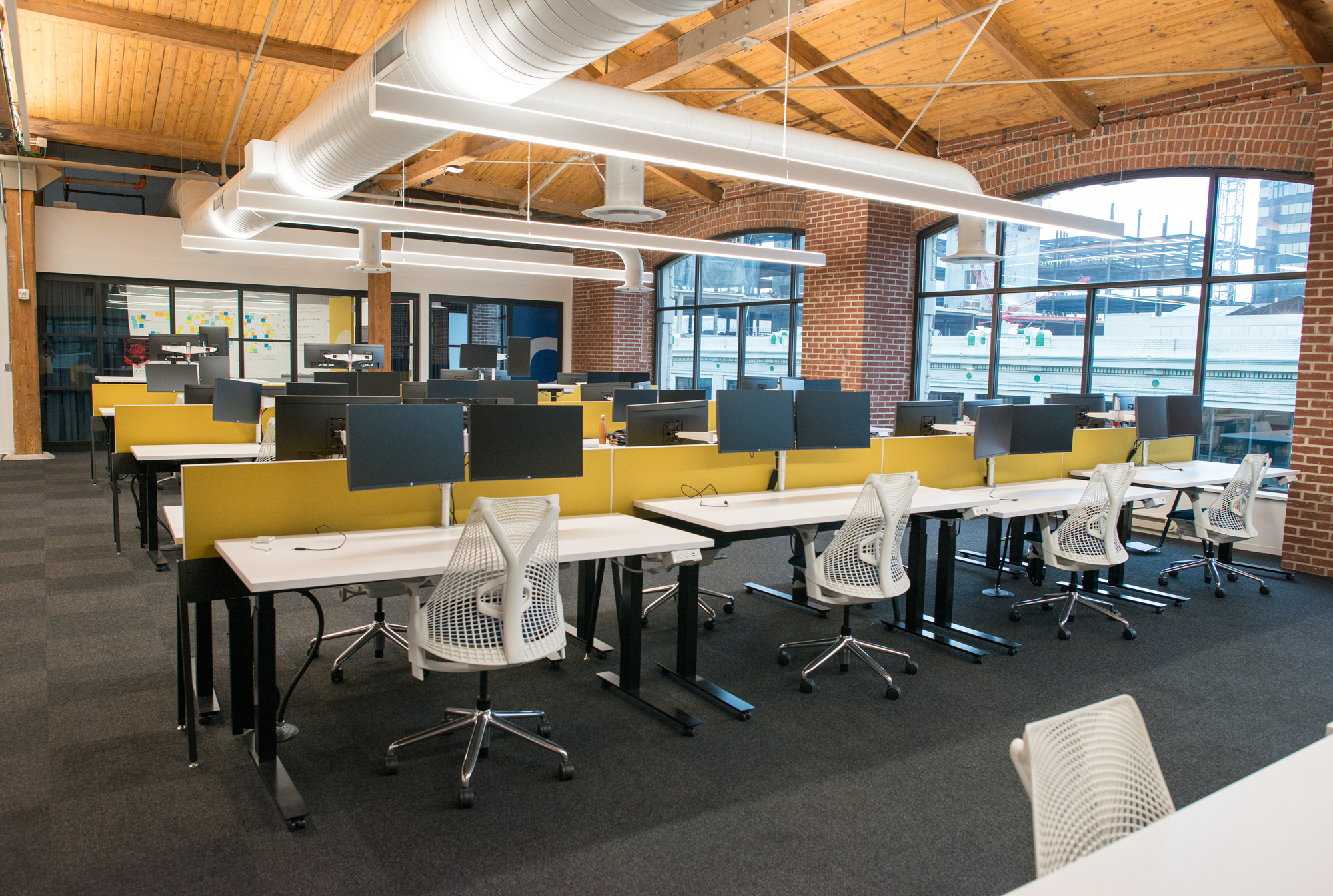Workplace design is constantly evolving to create better work environments for employees. When workers feel comfortable in their office, they’re more likely to be productive. However, sometimes it’s hard to pinpoint exactly what design changes will make a space more comfortable to work in. When looking at current office trends, dynamic design is what makes modern workspaces both aesthetically pleasing and gratifying to work in.
What is Dynamic Office Design?
Dynamic office design focuses on both interior and exterior design elements that are flexible and multi-functional. When taking the design component out of the scenario, dynamism within a workplace focuses on how each employee has their own unique style of successfully getting work done.
With both definitions in mind, dynamic office design is a workspace with open concept and flexible building elements. This flexibility, in turn, helps employees stay focused and productive throughout the day. You also want to step back and consider the space through separate lenses–cutting the space into parts, in a way. When you’re able to view a space in this way, you are visualizing it dynamically.
Dynamic Design Examples
Incorporating dynamic design into your workplace plays a major part in creating a comfortable, successful work community. Below are some of the more developmental elements that help make a dynamic design what it is.
1. Micro-Space
It’s important to recognize the smaller items within a workspace that impact employees’ productivity. The furniture, decor, and other items within an employee’s reach make up their micro-space. If an office is chopped up into small rooms filled with desks and cubicle walls, that tight space could negatively affect workers. Clutter and closed quarters often add strain to workers. Taking into account the smaller building structures within a space can benefit the office staff as a whole.
2. Environment at Large
Another piece of dynamic office design is looking at the room as a whole. If the office space is open concept, it’s easier to step back and see which sections are more cluttered. When your office is broken up into smaller rooms, it can be hard seeing what furniture can be shifted or how employees may prefer to work. When you’re able to see a workspace from dynamic viewpoints, the vision comes to life. If you build an office space at the developmental level, think dynamically about these elements so the environment can benefit employees long-term.
3. Overall Aesthetic
The final element involved in creating a dynamic office design is adding flair and decor to create an office aesthetic. If your business has a modern visual brand, make sure that energy continues into the physical environment. Observing and reacting to how others interact with decor,lighting, and other elements is a way to dynamically view your office. Unlike a micro-space that only considers the small, developmental elements of a room, acknowledging the overall aesthetic includes more interior design pieces.

